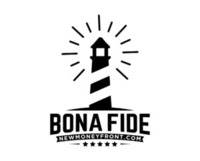For Romanian-born designer Ana Grigorovici, the path to creative and financial independence hasn’t been without its challenges. From navigating unpaid internships and immigration hurdles to launching her own purpose-led studio, Ana has had to learn the business side of design the hard way and often without guidance from the agencies she worked for.
Today, as the founder of Design Bench Studio, Ana has reframed her value, productised her services, and built a model that supports meaningful, mission-driven work. In this candid conversation, Ana shares what she’s learned about pricing, stability, and standing firm in your principles—even before the numbers add up.

How did you learn to navigate pricing, salaries, or negotiations in your field?
I started thinking about pricing my design services as packages after hiring a business coach. Jamie helped me with productising and establishing clear processes. This was after a decade of freelancing where agencies and recruiters set the rates based on my level (mid, senior, consultant). Once I began seeing myself as a one-woman agency, I adjusted my pricing to reflect the multiple roles I was actually playing: project manager, content manager, and account lead. Negotiation wasn’t something I saw handled well in the design industry, and senior leadership in agencies never offered transparency around pitching or pricing, even when I asked to be in the room for those meetings. I learned most of my business skills from books and talking to my peers. (Company of One, Getting Naked, and Win Without Pitching would be my go-to reads.)
Have you ever experienced pay disparity or financial challenges in your career?
At the start of my career, like most junior designers, I was underpaid and struggled to afford London rent. During my first unpaid internship, I applied for benefit support and jobseeker’s allowance, but as an immigrant from Romania, the system didn’t recognise my status, which even led to a court case. It took a year to secure the backdated payments I was entitled to, but I had to fight hard for it. Many people from outside the UK I know have faced similar struggles with sponsorship delays and low junior salaries, and I’ve lost friends to immigration laws.

What’s the best piece of financial advice you’ve received as a creative professional?
A fellow designer advised me to go freelance, explaining that working for three agencies instead of one would provide more financial stability. She compared it to sitting on a four-legged chair rather than a single-legged one. If one leg gives way, you still have three others to keep you steady. That is a great metaphor and great advice.
How do you balance making a living with doing work that feels meaningful?
In early 2022, I made a deliberate decision to stop working with B2C and corporate clients and focus solely on CICs, purpose-led businesses, tech-for-good ventures, and cultural organisations. While making a living as a creative without business training has always been tough, setting clear boundaries around the work I take on has aligned my practice with my values and led to fulfilling collaborations and sustainable financial stability. It turns out you can never be financially stable enough to make big principal decisions, so I made mine before I was on solid ground.

For Romanian-born designer Ana Grigorovici, the path to creative and financial independence hasn’t been without its challenges. From navigating unpaid internships and immigration hurdles to launching her own purpose-led studio, Ana has had to learn the business side of design the hard way and often without guidance from the agencies she worked for.
Today, as the founder of Design Bench Studio, Ana has reframed her value, productised her services, and built a model that supports meaningful, mission-driven work. In this candid conversation, Ana shares what she’s learned about pricing, stability, and standing firm in your principles—even before the numbers add up.

How did you learn to navigate pricing, salaries, or negotiations in your field?
I started thinking about pricing my design services as packages after hiring a business coach. Jamie helped me with productising and establishing clear processes. This was after a decade of freelancing where agencies and recruiters set the rates based on my level (mid, senior, consultant). Once I began seeing myself as a one-woman agency, I adjusted my pricing to reflect the multiple roles I was actually playing: project manager, content manager, and account lead. Negotiation wasn’t something I saw handled well in the design industry, and senior leadership in agencies never offered transparency around pitching or pricing, even when I asked to be in the room for those meetings. I learned most of my business skills from books and talking to my peers. (Company of One, Getting Naked, and Win Without Pitching would be my go-to reads.)
Have you ever experienced pay disparity or financial challenges in your career?
At the start of my career, like most junior designers, I was underpaid and struggled to afford London rent. During my first unpaid internship, I applied for benefit support and jobseeker’s allowance, but as an immigrant from Romania, the system didn’t recognise my status, which even led to a court case. It took a year to secure the backdated payments I was entitled to, but I had to fight hard for it. Many people from outside the UK I know have faced similar struggles with sponsorship delays and low junior salaries, and I’ve lost friends to immigration laws.

What’s the best piece of financial advice you’ve received as a creative professional?
A fellow designer advised me to go freelance, explaining that working for three agencies instead of one would provide more financial stability. She compared it to sitting on a four-legged chair rather than a single-legged one. If one leg gives way, you still have three others to keep you steady. That is a great metaphor and great advice.
How do you balance making a living with doing work that feels meaningful?
In early 2022, I made a deliberate decision to stop working with B2C and corporate clients and focus solely on CICs, purpose-led businesses, tech-for-good ventures, and cultural organisations. While making a living as a creative without business training has always been tough, setting clear boundaries around the work I take on has aligned my practice with my values and led to fulfilling collaborations and sustainable financial stability. It turns out you can never be financially stable enough to make big principal decisions, so I made mine before I was on solid ground.














